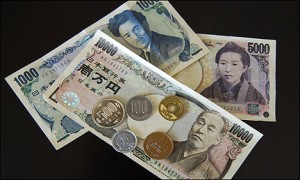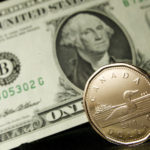 Yesterday’s trade saw EUR/JPY within the range of 138.27-140.51. The pair closed at 138.84, losing 0.86% on a daily basis, which marked the fourth consecutive daily loss.
Yesterday’s trade saw EUR/JPY within the range of 138.27-140.51. The pair closed at 138.84, losing 0.86% on a daily basis, which marked the fourth consecutive daily loss.
At 7:36 GMT today EUR/JPY was down 0.53% for the day to trade at 138.08. The pair touched a daily low at 137.65 at 6:50 GMT, or the lowest level since October 31st.
Fundamentals
Euro zone
French consumer inflation
The annualized consumer inflation in France probably continued to slow down in December, reaching 0.2%, according to the median forecast by experts, from a rate of 0.3% during the preceding month. In November annual inflation decelerated, due to lower prices of energy, manufactured products and food. During the month upward pressures came from prices of tobacco (+3.5% year-on-year), other services (+2.1%), actual rentals and services for dwellings (+1.5%) and clothing and footwear (+0.2%). At the same time, cost of petroleum products dropped at an annualized rate of 5%, while that of medical products – by 3%. Additional downward pressures came from prices of other manufactured products (-1.1%) and food (-0.2%).
Key categories, included in Frances Consumer Price Index (CPI), are manufactured products excluding clothing and pharmaceuticals (accounting for 20.6% of the total weight) and food (16.4%). Other categories, which comprise the index, are healthcare (10.1%), energy (8.7%), rentals and real estate services (7.4%), transport and communication services (5%), clothing and footwear (4.7%) and pharmaceuticals (4.6%).
The index measures the change in price levels of the above mentioned basket of goods and services from consumer’s perspective and also provides clues over purchasing tendencies. In case the CPI decelerated more than anticipated, this would have a bearish effect on the euro. The National Institute for Statistics and Economic Studies will release the official report at 7:45 GMT.
France’s annualized CPI, evaluated in accordance with Eurostat’s harmonized methodology, probably remained unchanged in December, following a 0.4% climb in the prior month. In monthly terms, the harmonized CPI probably also remained flat in December, after falling 0.2% in November.
Italian consumer inflation – final estimate
Italys final annualized consumer inflation was probably at 0.0% in December, matching the preliminary inflation estimate, reported on January 7th. In November the final annualized index of consumer prices rose 0.2%, while in October – 0.1%. According to provisional data, in December the largest annual price drop was reported for non-regulated energy products (7.9%, after a 3.1% fall in November), supported by a decline in fuel prices. Cost of transport decreased 0.9% during the same month, cost of housing, water, electricity and gas went down 0.3%, while prices of food and non-alcoholic beverages were 0.2% lower. At the same time, consumers paid more for restaurants and hotels (+0.9% year-on-year), furnishing and household equipment (+0.6%) and clothing and footwear (+0.2%).
Key categories, included in Italys Consumer Price Index, are food and non-alcoholic beverages (accounting for 16% of total weight), transport (15%), restaurants and hotels (11%) and housing, water, electricity and other fuels (10%). Other categories are clothing and footwear (9%), furnishing and household equipment (8%), recreation and culture (8%) and health (also 8%). Communication, education, alcoholic beverages, tobacco and other goods and services comprise the remaining 15% of the index.
The nations final annualized CPI, evaluated in accordance with the harmonized methodology, probably dipped 0.1% in December, according to market expectations. If so, this would match the preliminary HICP estimate, reported on January 7th. In November the final annualized HICP rose at a pace of 0.3%, up from a preliminary 0.2% gain, marking the highest annual rate of inflation since May 2014. The National Institute of Statistics (Istat) is to release the official CPI report at 9:00 GMT.
Euro area industrial output
The seasonally adjusted index of industrial production in the Euro zone probably rose 0.2% in November compared to a month ago, following a 0.1% gain in October. Annualized output, on the other hand, probably contracted at a pace of 0.8% in November. If so, this would be the most significant annual drop since August 2013, when output shrank at a pace of 1.1%. In October industrial output expanded at an annual rate of 0.7%, as production of non-durable consumer goods rose 3.7%, that of capital goods went up 1.4% and production of durable consumer goods increased 0.2%.
The index, reflecting business cycle, measures the change in overall inflation-adjusted value of output in sectors such as manufacturing, mining and utilities. In case industrial output expanded more than anticipated, this would support demand for the euro, as this implies higher inflationary pressure. Eurostat is to publish the official data at 10:00 GMT.
Japan
Machinery Orders
Machinery Orders in Japan probably increased 5.0% in November compared to a month ago, according to expectations, after in October compared to September the indicator dropped 6.4%. In annual terms, however, new orders, placed at major manufacturers in Japan, probably decreased 5.8% in November, marking a second consecutive period of contraction, after in October orders were 4.9% fewer. If confirmed, Novembers drop rate would be the most considerable since May, when orders fell at a rate of 14.3%.
Machinery orders are considered as an excellent leading indicator, providing clues over business capital spending in Japan. An increase in new orders suggests that business confidence has strengthened, which can also bring to life positive expectations over the nations economic growth. Therefore, in case new orders rose at a faster-than-anticipated pace, this would boost demand for the yen. Japanese Cabinet Office will release the official report at 23:50 GMT.
Safe haven demand boosted
Demand for haven assets such as the yen increased, as Japan’s Topix (TPX) index of shares lost 1.2%, while oil and copper futures slumped to levels unseen since 2009.
“Risk aversion continues to sway currencies amid declines in stocks, oil and metals,” said Satoru Igarashi, senior currency strategist, at Mizuho Securities Co., cited by Bloomberg. “Dollar-yen continues to test new lows.”
At 7:43 GMT USD/JPY was losing 0.75% on the day to trade at 117.04. The pair touched a daily low at 116.75, or the lowest level since December 17th.
Pivot Points
According to Binary Tribune’s daily analysis, the central pivot point for the pair is at 139.21. In case EUR/JPY manages to breach the first resistance level at 140.14, it will probably continue up to test 141.45. In case the second key resistance is broken, the pair will probably attempt to advance to 142.38.
If EUR/JPY manages to breach the first key support at 137.90, it will probably continue to slide and test 136.97. With this second key support broken, the movement to the downside will probably continue to 135.66.
The mid-Pivot levels for today are as follows: M1 – 136.32, M2 – 137.44, M3 – 138.56, M4 – 139.68, M5 – 140.80, M6 – 141.92.
In weekly terms, the central pivot point is at 141.74. The three key resistance levels are as follows: R1 – 143.33, R2 – 146.32, R3 – 147.91. The three key support levels are: S1 – 138.75, S2 – 137.16, S3 – 134.17.





